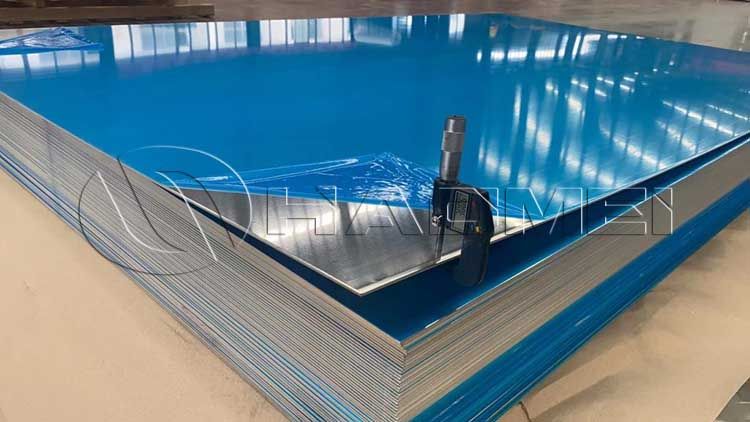Development of Aluminum Alloy Tankers in Different Countries
Amid the global trend toward lightweight freight, aluminum tank trucks, with their advantages of light weight, corrosion resistance, and high recyclability, are becoming a mainstream choice for transporting liquids, powders, and other materials.

European and American Markets
As a major road transportation nation, the development of aluminum tank trucks in the United States is deeply tied to energy transportation needs. Due to the well-developed shale oil and natural gas industries in the United States, there is a huge demand for liquid fuel transportation. Aluminum tank trucks, with their light weight, can effectively increase the cargo capacity of a single transport.
Compared to traditional steel tank trucks, aluminum tank trucks can reduce their weight by 30%-40%. For example, a typical 40-foot tank truck can carry approximately 2-3 tons more cargo, saving logistics companies 15%-20% in fuel costs annually.
When it comes to aluminum alloys, American companies prefer 5083 aluminum plate. This alloy, with a magnesium content of approximately 4.5%, combines high strength with excellent weldability. It can withstand the bumps and impacts of long-distance transport, while also being resistant to fuel and chemical corrosion, making it suitable for the rigors of long-distance interstate transportation in the United States. Furthermore, the United States' improved aluminum alloy recycling system (with a recycling rate exceeding 95%) has further reduced the subsequent disposal costs of aluminum tank trucks, creating a closed loop of "use-recycling-reuse."
Europe, on the other hand, places greater emphasis on the dual drivers of "environmental protection and standardization." The EU's carbon reduction targets explicitly mandate that the logistics industry reduce carbon emissions, and the lightweight nature of aluminum tank trucks has become a key driver for automakers in reducing emissions. Data shows that aluminum tank trucks can reduce CO2 emissions by approximately 8-10 kg per 100 kilometers, meeting EU environmental standards for commercial vehicles.
In terms of material selection, European companies favor 5754 aluminum alloy, which contains approximately 2.7% magnesium, offers higher elongation and excellent formability, making it suitable for complex tank truck bodies. It also offers strong weather resistance, making it suitable for Europe's rainy and snowy climate. Furthermore, unified European road transport standards (such as tank truck dimensions and load limits) have promoted standardized production of aluminum tank trucks, further increasing their market penetration.
Asian Market
Asia is the fastest-growing region in the aluminum tank truck market. In recent years, with the upgrading of the logistics industry and tightening environmental protection policies, demand for aluminum tank trucks has surged, but development priorities vary across countries.
China is the core growth engine of the Asian aluminum tank truck market. On the one hand, national policies such as the "Lightweight Truck Promotion Policy" and "New Energy Commercial Vehicle Subsidies" have directly promoted the use of aluminum tank trucks in hazardous chemicals, food, and liquid transportation.
For example, hazardous chemical transportation requires tank trucks to possess higher safety and corrosion resistance, and aluminum tank trucks are more likely to meet these standards than steel tank trucks. Currently, the penetration rate of aluminum tank trucks for hazardous chemicals in China has exceeded 30%. Furthermore, the large-scale development of the food and beverage industry (such as long-distance transportation of dairy products and beer) has also driven demand for sanitary aluminum tank trucks.
These tank trucks are made of 5052 aluminum alloy, which contains approximately 2.5% magnesium. This provides a smooth surface, is easy to clean, and is resistant to corrosion from food acids, making it the preferred material for food and liquid transportation. However, the Chinese aluminum tank truck market still faces the challenge of high costs. Currently, aluminum tank trucks are 20%-30% more expensive than steel tank trucks. Some small and medium-sized logistics companies still prefer steel trucks due to their higher cost-performance. However, with the decline in aluminum alloy recycling costs and the advancement of large-scale production, the cost gap is gradually narrowing.
Japan, on the other hand, is pursuing a "refined and miniaturized" approach. Due to Japan's narrow roads and the predominance of short-distance urban logistics, aluminum tank trucks prioritize compactness, flexibility, and energy efficiency.
Japanese companies often use 6061 aluminum alloy, which contains silicon and magnesium, offering high strength and significant lightweighting, making it suitable for small tank trucks (with a load capacity of 5-10 tons). Japanese automakers also employ more sophisticated tank truck structural design, such as using a "unibody" tank body to reduce welds and improve sealing and durability.
Furthermore, Japan leads in aluminum recycling technology, with a recycling rate of over 98% for scrapped aluminum tank trucks, effectively reducing overall lifecycle costs and supporting the promotion of aluminum tank trucks.
Original Source:https://www.aluminumtankerplate.com/a/development-of-aluminum-alloy-tankers-in-different-countries.html
Tags: 5083 aluminum plate ,
